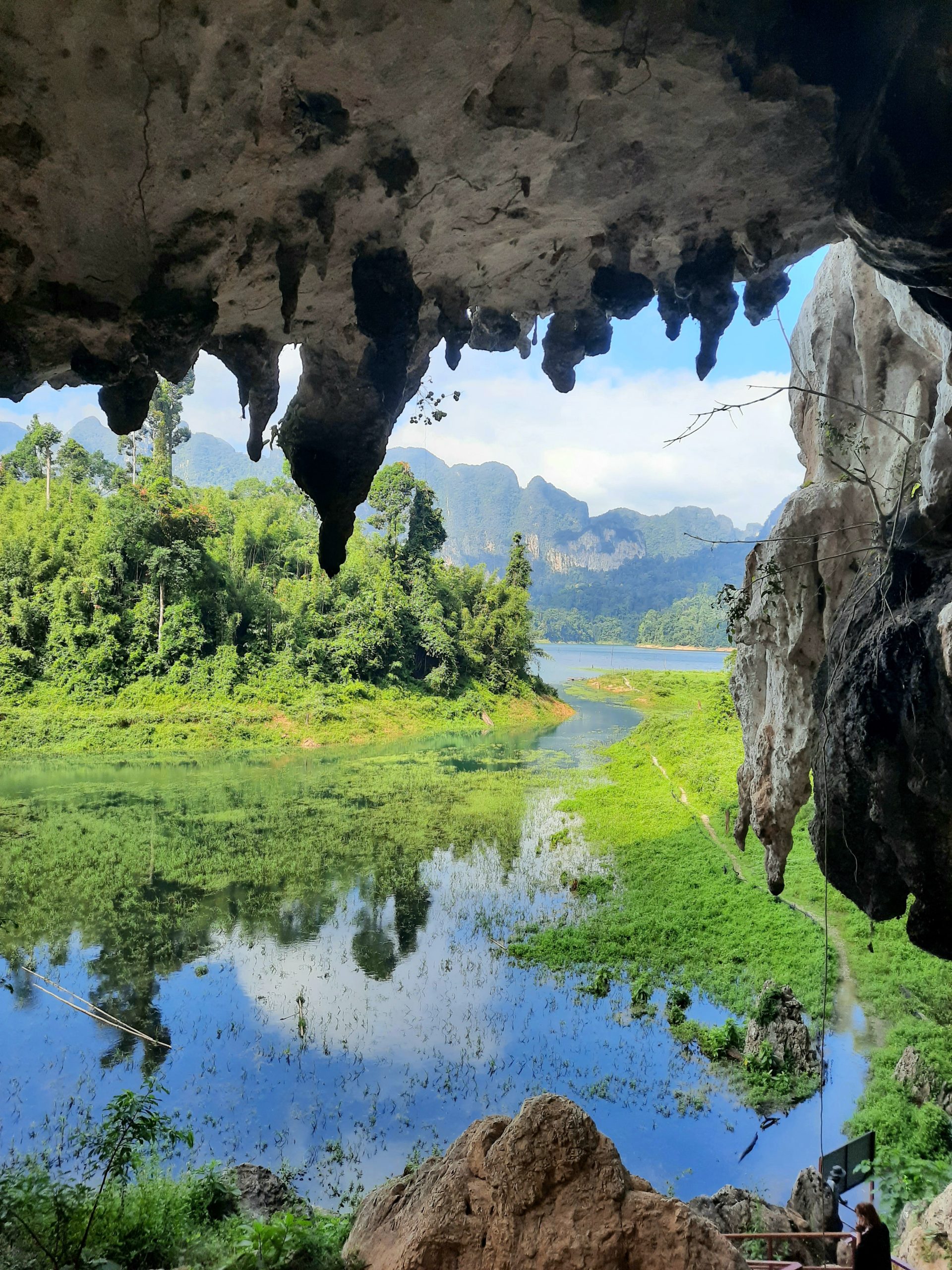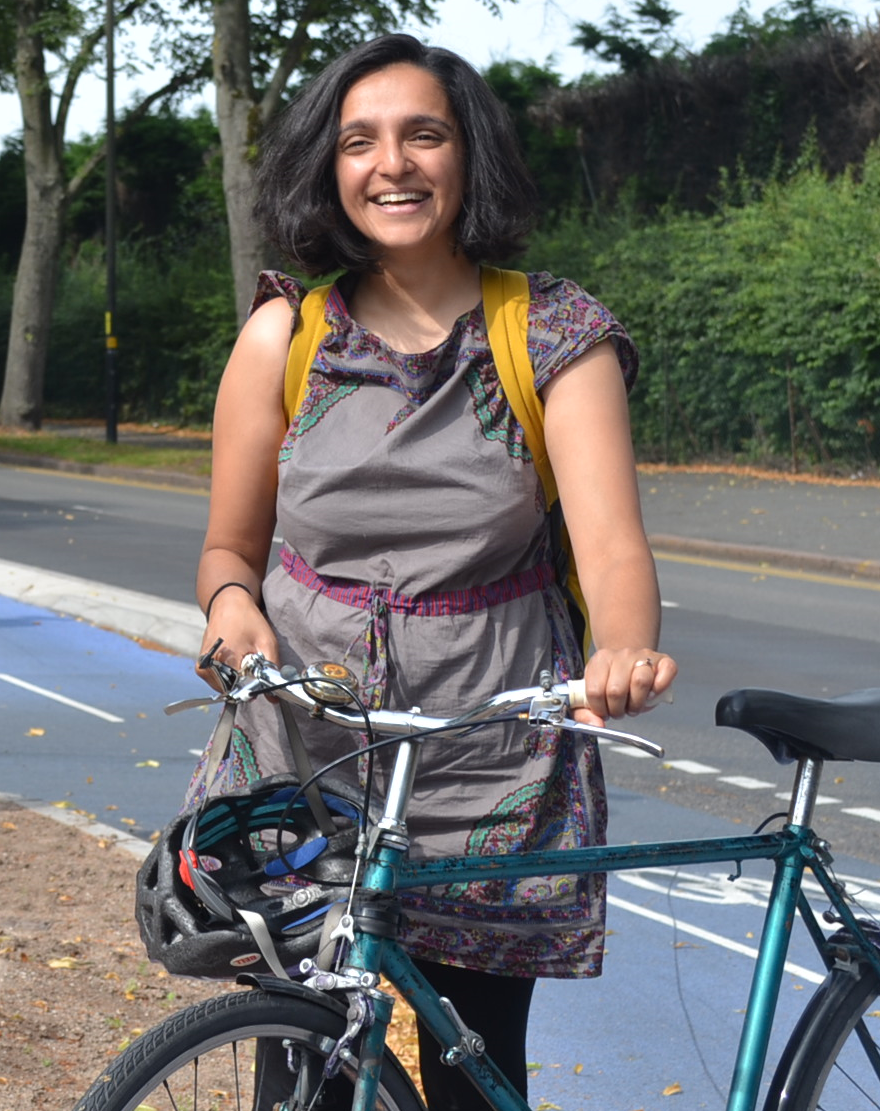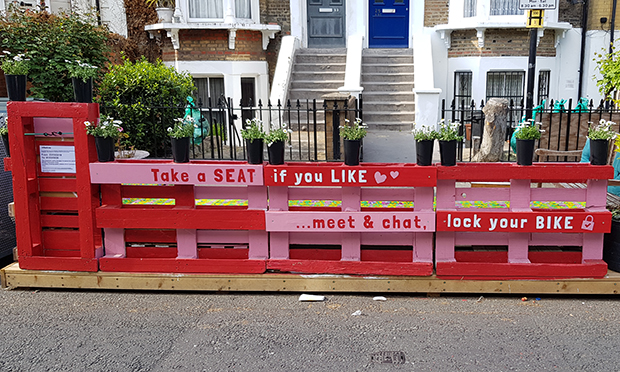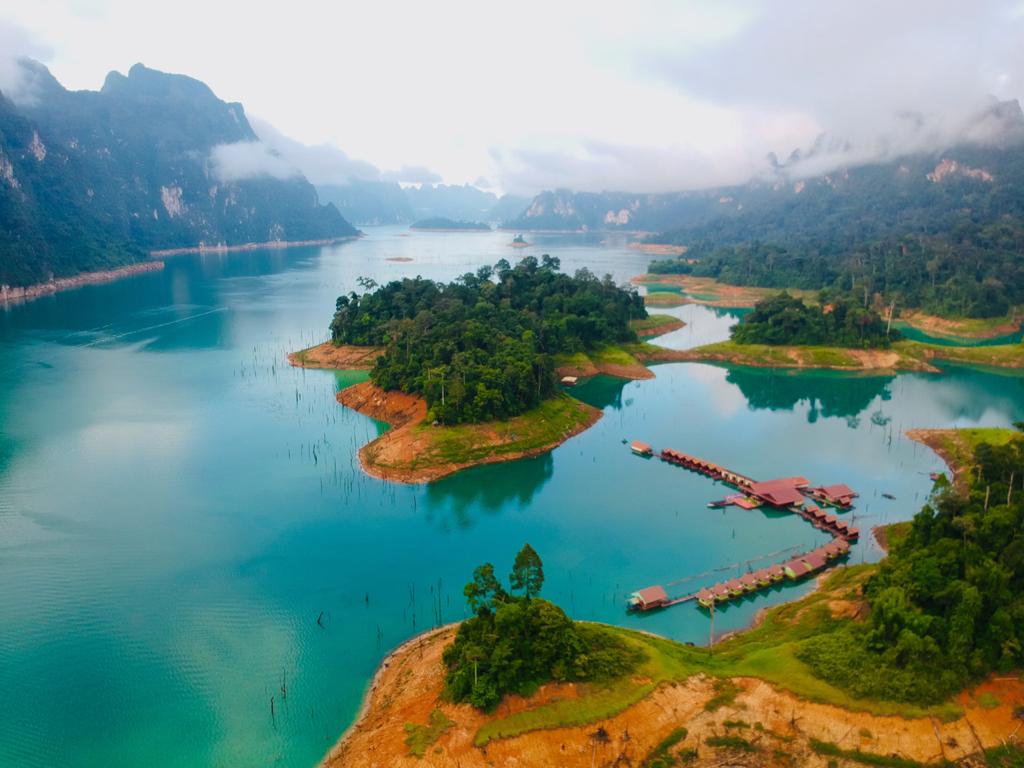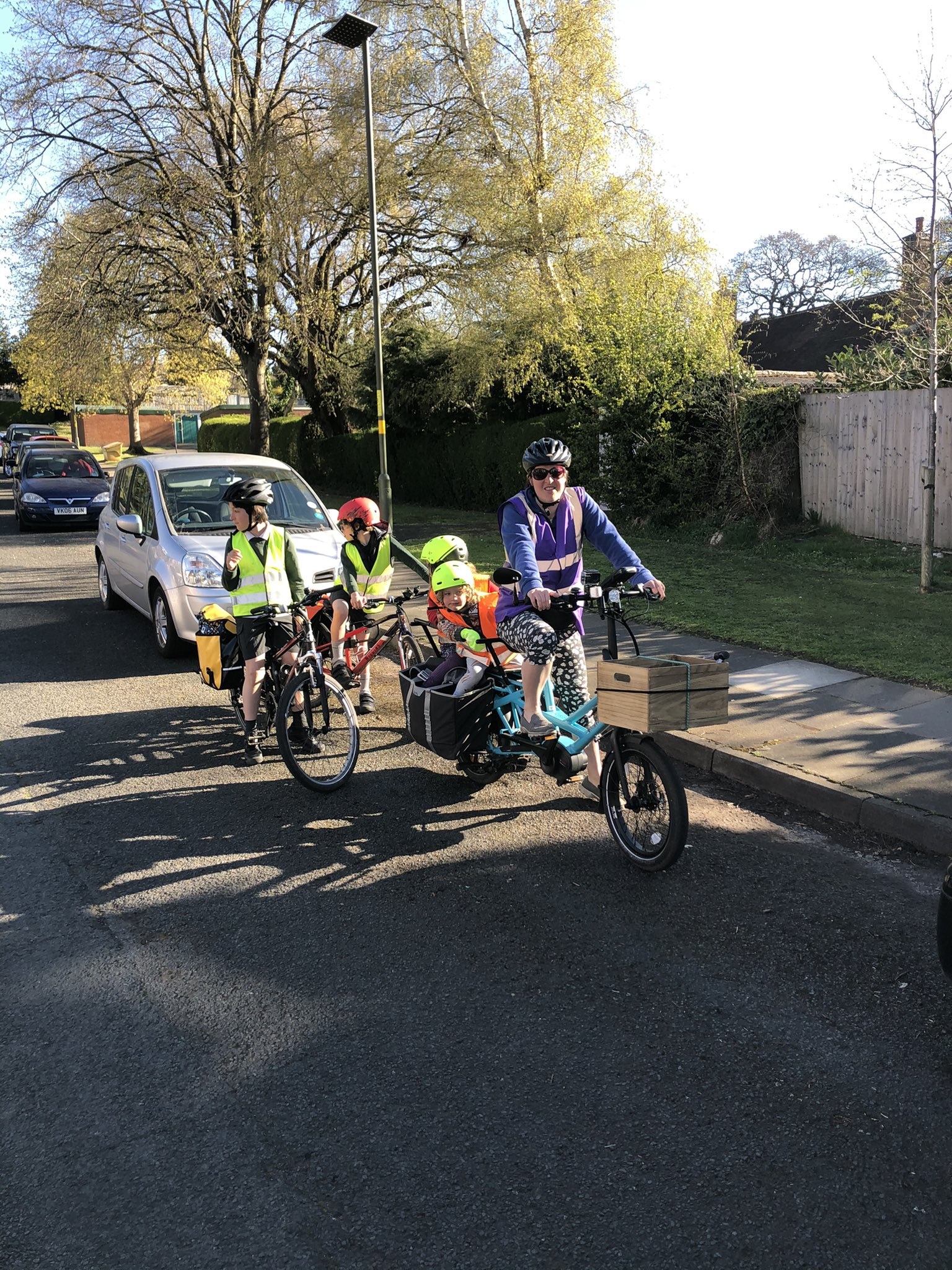This is part 2 of “Life in the Jungle” from Mike Horrocks. Part 1 can be found here.
New Species – Life in the Jungle part 2
Khao Sok is one of Thailand’s most visited national parks, primarily thanks to the popularity of Cheow Lan Lake, where you can eat and sleep on floating rafthouses, kayak, hike, cave and enjoy boat safaris to try your luck at spotting some of the many species that do still inhabit the area. Common sightings include elephants, hornbills, flying foxes, otters, gibbons and langurs and I have been fortunate enough to see binturong and gaur. I dream of the day I see a tapir, sun bear or clouded leopard.
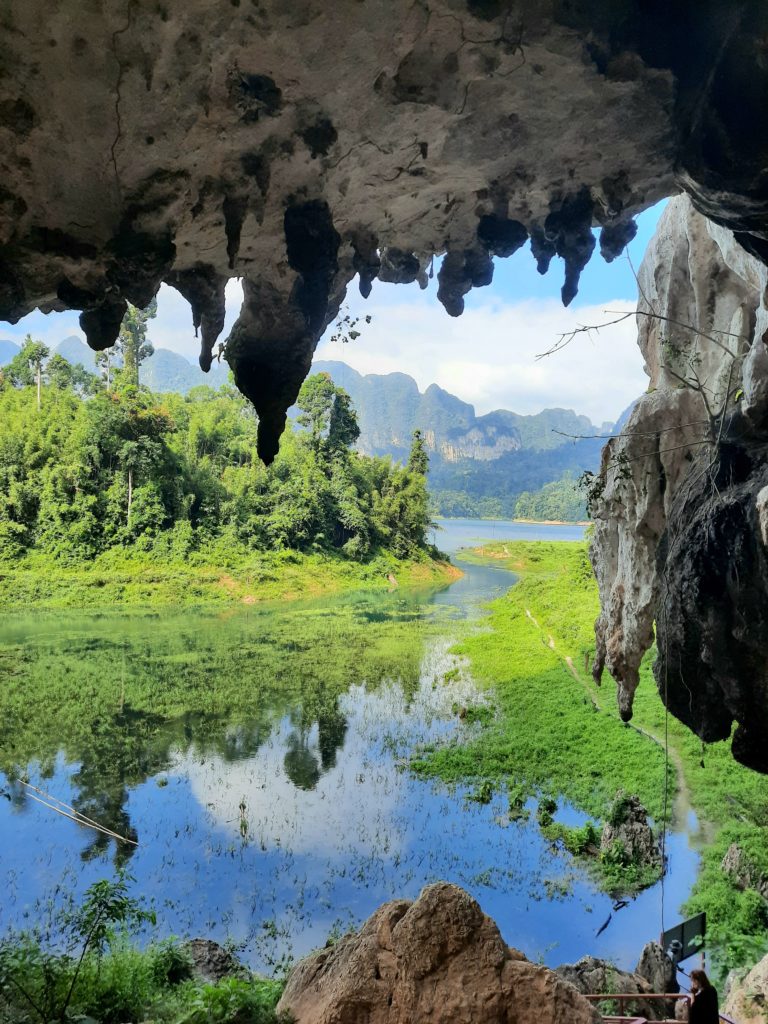
Ratchchaprapha Dam
Ratchaprapha Dam, the main gateway the lake, is about an hour’s drive from Khao Sok village, where I work. Almost every family here has at least one person that is (usually) working in the local tourist industry – though many are now tending to the small rubber and oil palm plantations that run along both sides of the highway that splits Khao Sok from its neighbouring national park, Khlong Phanom. These parks, along with a three other protected areas, make up a contiguous rainforest of almost 1,500 square miles, meaning that the flooding of the lake removed about 5% of this habitat. It sounds like a lot, but a quick calculation tells me that the area of the Amazon lost to deforestation every year is probably twenty times as big. In other words, an area the size of all five parks that make up our beloved Khao Sok forest is cut down every year in South America.
Remember when I said (in part 1) that we should reduce our meat consumption? Well, this is one reason to jump on the bandwagon with me.
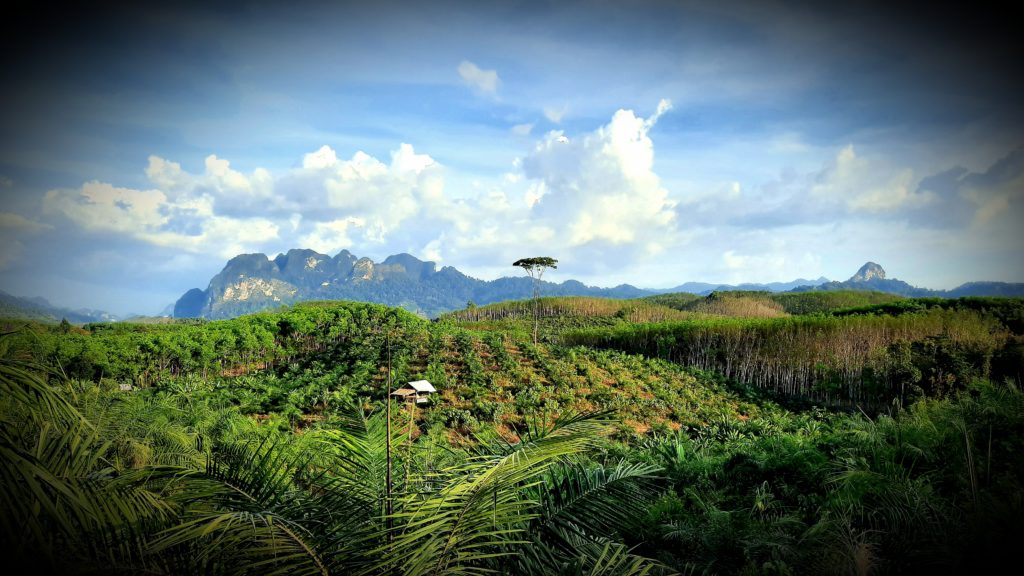
Nature in Khao Sok
So what is it like to live in Khao Sok, one of these areas where wild animals and people regularly cross paths?
First of all, most animals keep their distance. One of the more popular tourist activities is a night safari – where we walk into the jungle after dark to see what animals we can find. It is very unusual to spot the rarer species on these regularly trodden trails so close to the village but some animals do feel comfortable living here. Other than the multitude of bugs, you might find langurs, macaques, mouse deer, civets, slow lorises, lizards, snakes and various rodents in this area. But I doubt very much that anyone has ever caught a coronavirus from a night safari.
You won’t find them in the wet markets that have brought such condemnation to Asia but some protected animals do end up on the menu. It is illegal to hunt inside the national park but I have heard of civets, serows and turtles being eaten here. I haven’t encountered bat meat since my boat racing adventure, but that was when I lived in northern Thailand where wild jungle animals are a relative rarity.
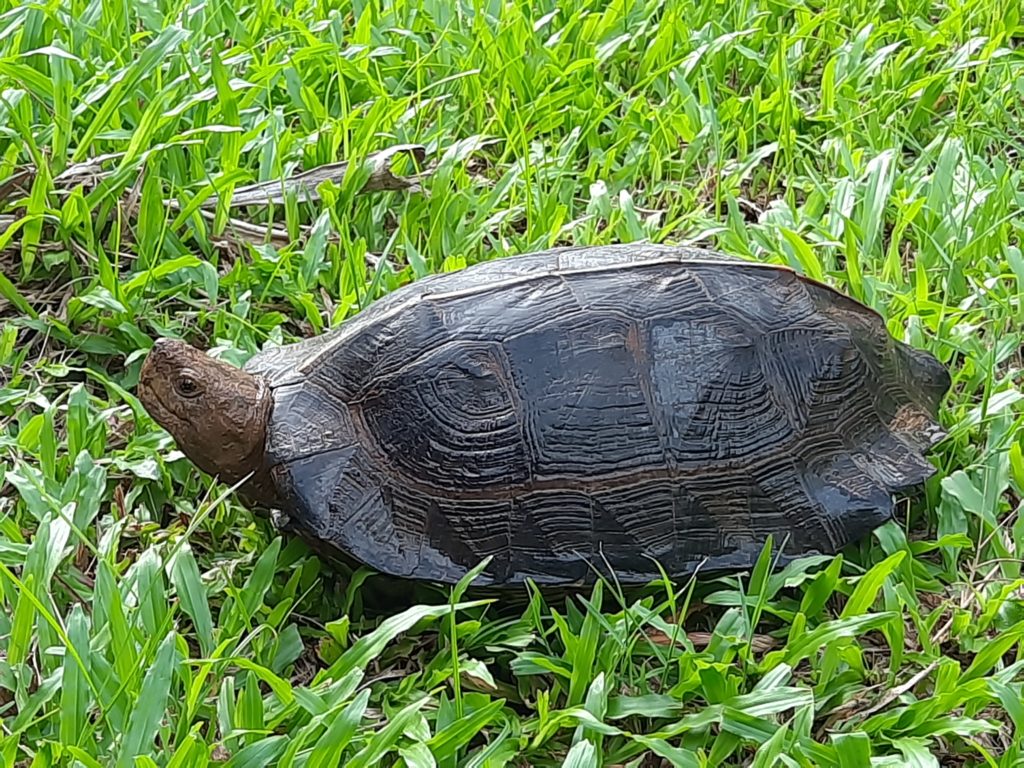
For us residents, it’s generally the animals that come out of the jungle that pose a potential threat, and you will see that they tend to be the same ones that people in other places have to be wary of. There are some spots in the village where you can regularly see macaques and they are quite comfortable raiding bins and kitchens for food. Apparently at one time there was a monkey that had to be removed from the village because it was attacking people but this is rare.
Check your shoes!
There are a lot of snakes in the region, some of which can be deadly, but snake bites are not common and many people are actually more scared of the centipedes because they tend to be more aggressive. I have a friend that was bitten by a centipede that was hiding in his shoe, so the advice to check before you put them on in the morning is relevant, but in my experience you’re more likely to find frogs and spiders in there than anything else.
The biggest surprise I have had was when I felt something sharp in my towel as I was drying off after my shower one morning. I felt my cheek and discovered a scorpion had its tail embedded in my face. Hours of pain followed and it was only the next day that the subsequent numbness subsided.
Bats
And now we come back to the bats. Being an area with lots of caves, fruit and insects around, I am sure Khao Sok is home to many species. My own home has just one: a single bat that flies in through the gap between the walls and the roof of my house most nights and leaves a nice mess for me to clean up in the morning. In fairness, the bat has been here longer than I have so if we get to the stage where one of us has to leave, it should probably be me.
There are also many species of mice, including bamboo rats that can grow to be half a metre long.
Disease spreading
Whilst bats and mice can spread disease and might be Khao Sok’s most likely cause of a future pandemic, it’s the mosquitoes and ticks that worry me the most. Earlier this year I lost my dog to ehrlichiosis – a tick-borne disease. And around this time last year I was bitten by a particularly large mosquito on my wrist that gave me exactly the same dull, spreading sensation that you get from a vaccination. So far, I have had no other symptoms so hopefully that was the feeling of a successful defense from my immune system. A few people did contract dengue around that time so it’s possible I had an asymptomatic case.
Another way that disease can spread is through water but, again, this is a danger that exists the world over and is not limited to jungle environments so our biggest advice to anyone going for a swim is to look out for the freshwater pufferfish as they can take a little chunk out of your toes if you’re not careful.
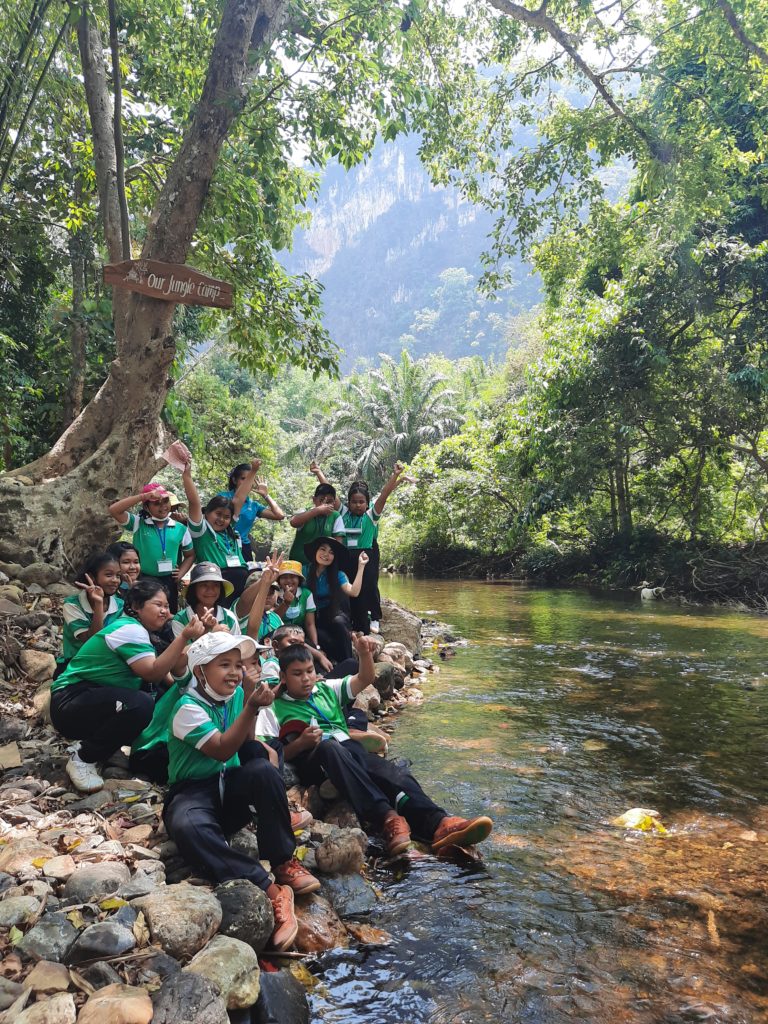
Overall, I can say that living in close proximity to such a rich diversity of plant and animal life does increase the risks of disease and that appropriate precautions should be made, but the rules are pretty much the same as for urban areas; anyone who is coming into contact with live or dead animals should be careful about sanitation. And it definitely shouldn’t put you off visiting tropical paradises as the risks to a short-term visitor are extremely low.
The role of tourism
In fact, I strongly believe that the presence of tourism actually plays a very important role in forest conservation, and therefore the overall health of the planet. Every person entering the national park must pay for a ticket and so this generates income that can be put towards preserving the natural beauty. With access to advanced technology it is now easier to monitor some issues, such as gradual forest encroachment by the owners of rubber orchards each time they plant new trees.
The biggest reason I think it helps, though, is by generating income for the surrounding community. With reasonably well paid jobs available like hotel receptionists, drivers and guides, that depend on the health of the forest, fewer families will be tempted to make a living as hunters. This is one way that wealthy nations can incentivise rural communities in less developed countries to take care of their natural surroundings. Going back to the example of the Amazon, as long as we, as a globalised world, keep paying farmers in Brazil more to graze cattle than we do to plant trees, the forest will continue to shrink.
The Black Market
But don’t get me wrong: some people still go rogue. Last year I was out with a few friends and we found a snake that none of us recognised. Being big snake enthusiasts, my friends were very excited and they collected data to send off to various museums before finding out that this was, in fact, a species not yet known to science. Imagine our horror when, last month, we found (probably) the same snake had been caught and sold through Facebook.
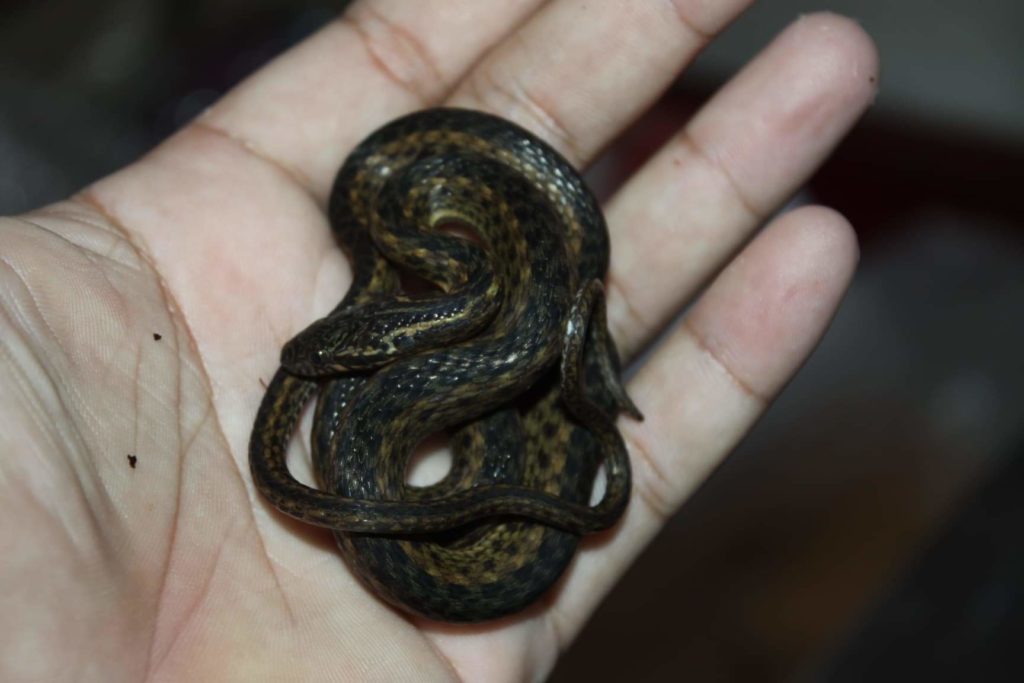
On another occasion, I climbed for an hour up a steep mountainside to visit a site where rafflesia flowers were blooming. Rafflesia are among the largest flowers in the world, bloom for only a few short days and only exist in the wild under very specific conditions. Pretty special stuff. But, unfortunately, someone had been up the mountain the night before and made off with the blooming specimens, as well as a few, cabbage-sized buds, as they can be sold at high prices for medicinal use.
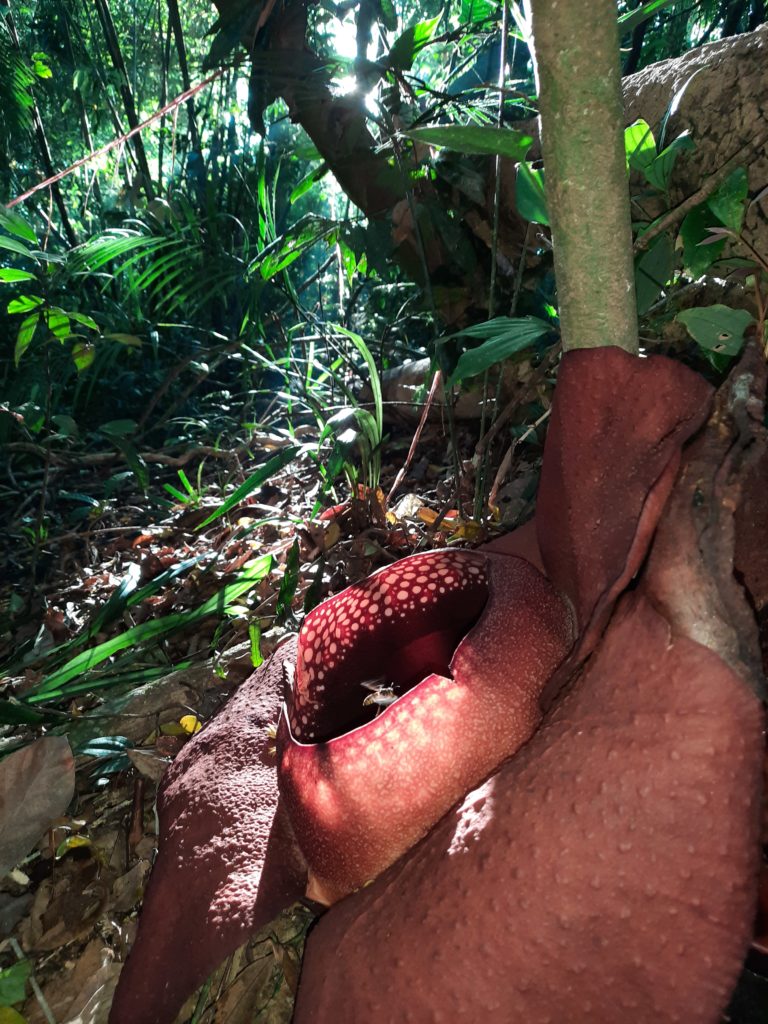
It’s hard to be angry at individuals for such actions. The nature of supply and demand dictates that the rarer something is, the bigger the reward is for the few that break the rules to supply the black market. I think that the best we can do is to educate about the negative effects of such industries as the exotic pet trade and traditional medicine when no consideration for sustainability is taken into account – that, and bringing those involved in illegal activities to justice in a fair way that targets the wealthy buyers and the middlemen and not just the poachers.
As it stands, we have a long way to go. I’ve had many an eye opening conversation with my friend that previously worked in the jungle in Cambodia about the organised crime surrounding tiger trafficking that takes place there; taking on those that are involved can mean putting a price on your head.
Community Conservation
But back to the less dangerous side of conservation. I know all too well how complex the topic is to the uninitiated and don’t expect the average hunter in Thailand to fully grasp, for example, the difference to the ecosystem in catching an apex predator versus a primary consumer, especially if no one in his or her daily life has ever suggested that there might be a moral decision to be made when weighing up the two options. In fact, one of my earliest lessons in translating for interviews between villagers and students learning about the Sustainability Compass (which I highly recommend you look up) was that there isn’t even a word for sustainability in Thai.
My hope is that by working with communities – both as organisations and as tourists – we can slowly shape local wisdom to include up-to-date knowledge of best practice on environmental issues such as effective waste management, forest conservation and animal welfare but this is only going to bring real results if we promote change across all levels of society.
I will continue to do my part by working with the schoolchildren living in Khao Sok to teach them about how amazing this place is and how we can take good care of it. I hope that you will do your part by choosing sustainable suppliers, travelling responsibly and identifying improvements you can make to support the community of people, plants and animals in your own neighbourhood.
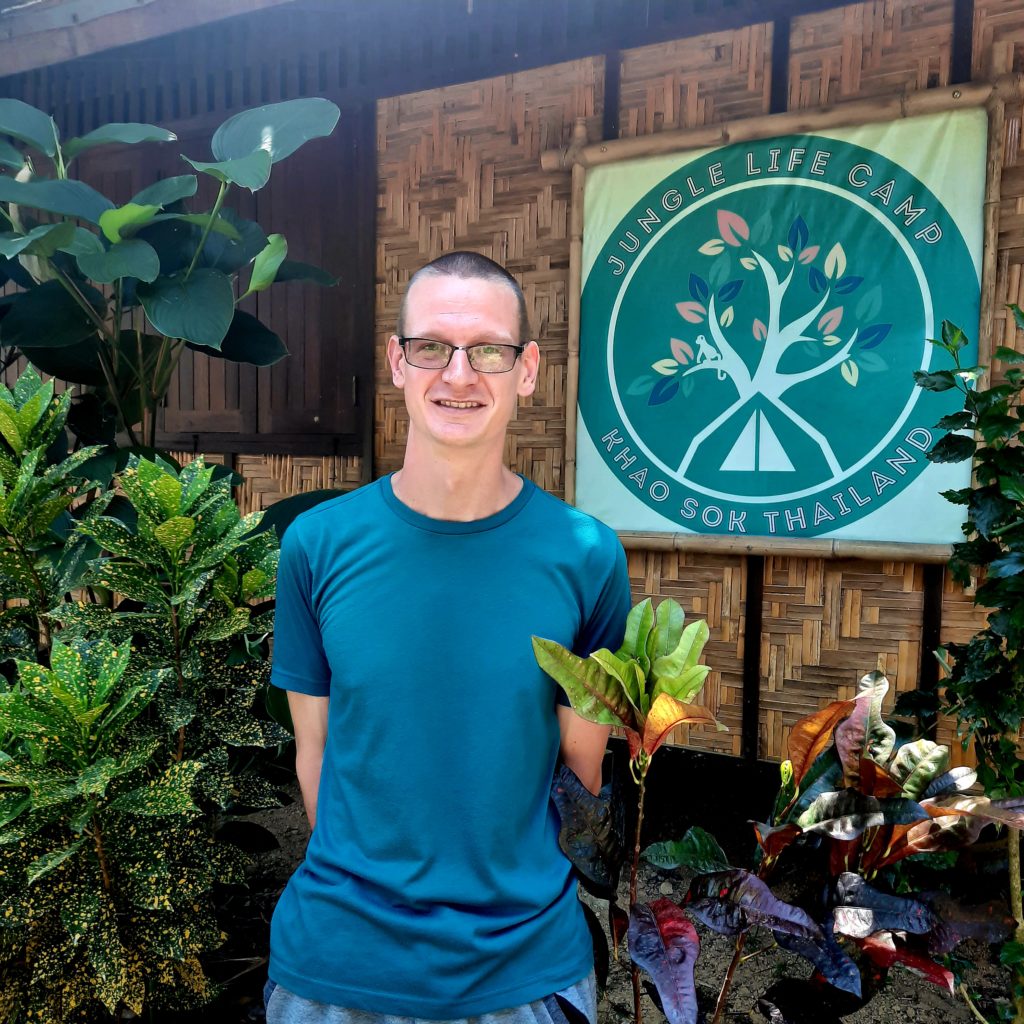
Mike is Camp Director at Jungle Life Camp in Khao Sok, Thailand. You can find them on Facebook and Instagram and at www.khaosokjunglelife.com.
He is also a steering committee member for Compass Education, where his current role includes content creation as part of the transition from face-to-face training to an online database of courses aimed at anyone with an interest in understanding the topic of sustainability better, especially educators.
Mike is more than happy to be contacted about either of these initiatives at mike@khaosokjunglelife.com.

